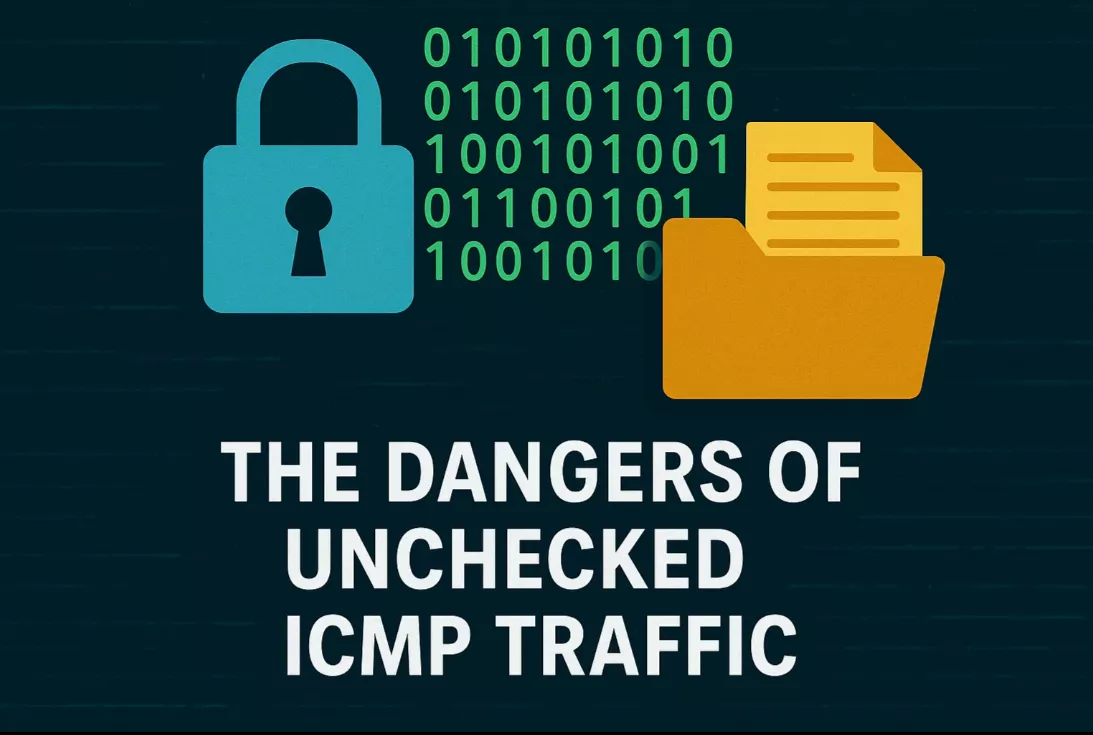ICMPBreach - The Hidden Dangers of ICMP Traffic
Hello everyone,
In this post, I want to draw attention to the often underestimated risks of ICMP packets. A topic I explore with my proof-of-concept project ICMPBreach (available on GitHub). ICMP, commonly known for tools like ping, can be exploited by attackers to smuggle data such as messages or even files through networks undetected. This post highlights the dangers of this technique and explains why unchecked ICMP traffic poses a security risk. For discussions and questions, feel free to join our Discord server!
What is ICMPBreach?
ICMPBreach is a Python-based proof-of-concept (PoC) that demonstrates how ICMP Echo Request packets can be misused for covert data transmission. It leverages Diffie-Hellman key exchange and AES-CBC encryption to securely transfer data. Large datasets are split into chunks, enabling the transmission of files. This project is intended solely for educational purposes and should only be used in authorized test environments.
How Does Covert Data Transmission Work?
Attackers can exploit ICMP in various ways:
- Data Obfuscation: Messages or files are encrypted and concealed within ICMP payloads.
- Chunking Mechanism: Large data (e.g., base64-encoded files) is divided into smaller packets (e.g., 32 bytes) and transmitted across multiple ICMP packets.
- Stealth: ICMP traffic is rarely scrutinized, making it an ideal covert channel.
For instance, a file could be base64-encoded, split into chunks, and sent via ICMP to an external server—all without raising alarms in standard security setups.
The Dangers of Unchecked ICMP Traffic
ICMP packets offer attackers a discreet way to bypass network defenses:
- Data Exfiltration: Sensitive data like passwords or documents can be smuggled out unnoticed.
- File Transfer: Entire files (e.g., PDFs or binaries) can be exfiltrated using chunking techniques.
- C2 Communication: Malware can use ICMP for command-and-control, often permitted through firewalls.
- Hard to Detect: Many security systems overlook ICMP payloads, complicating detection efforts.
Real-World Scenario: Advanced Persistent Threats (APTs) have leveraged ICMP to maintain undetected communication for months, making it a persistent challenge to disrupt.
Why Is Detection So Difficult?
Several factors make ICMP-based attacks hard to spot:
- Lack of Inspection: Standard firewalls rarely analyze ICMP packets in depth.
- Legitimate Traffic: ICMP’s diagnostic role (e.g.,
ping) disguises malicious activity. - Small Packet Sizes: Chunking keeps traffic subtle and indistinguishable from normal ICMP.
Countermeasures
To mitigate these risks, network administrators can take these steps:
- Monitor ICMP: Employ Deep Packet Inspection (DPI) tools to scrutinize ICMP payloads for anomalies.
- Restrict ICMP: Permit only essential ICMP types (e.g., Echo Reply) and block or limit others.
- Anomaly Detection: Watch for unusual patterns, such as high ICMP rates or sequential packets.
- Segmentation: Isolate critical systems to reduce the impact of potential breaches.
- Check Logs: Regularly review network logs to identify hidden channels.
Getting Started
To explore ICMPBreach, visit the GitHub repository for the source code and detailed setup instructions. The repo includes everything you need to test this PoC in a controlled environment.
Conclusion
ICMPBreach vividly illustrates how ICMP packets can serve as an invisible conduit for arbitrary data—from messages to files. The lack of scrutiny on this protocol makes it a security risk that demands attention. Important: Use this tool only with explicit permission—unauthorized testing is illegal. If you find the project compelling, star the repo and share your feedback!
Stay safe,
Kevin
